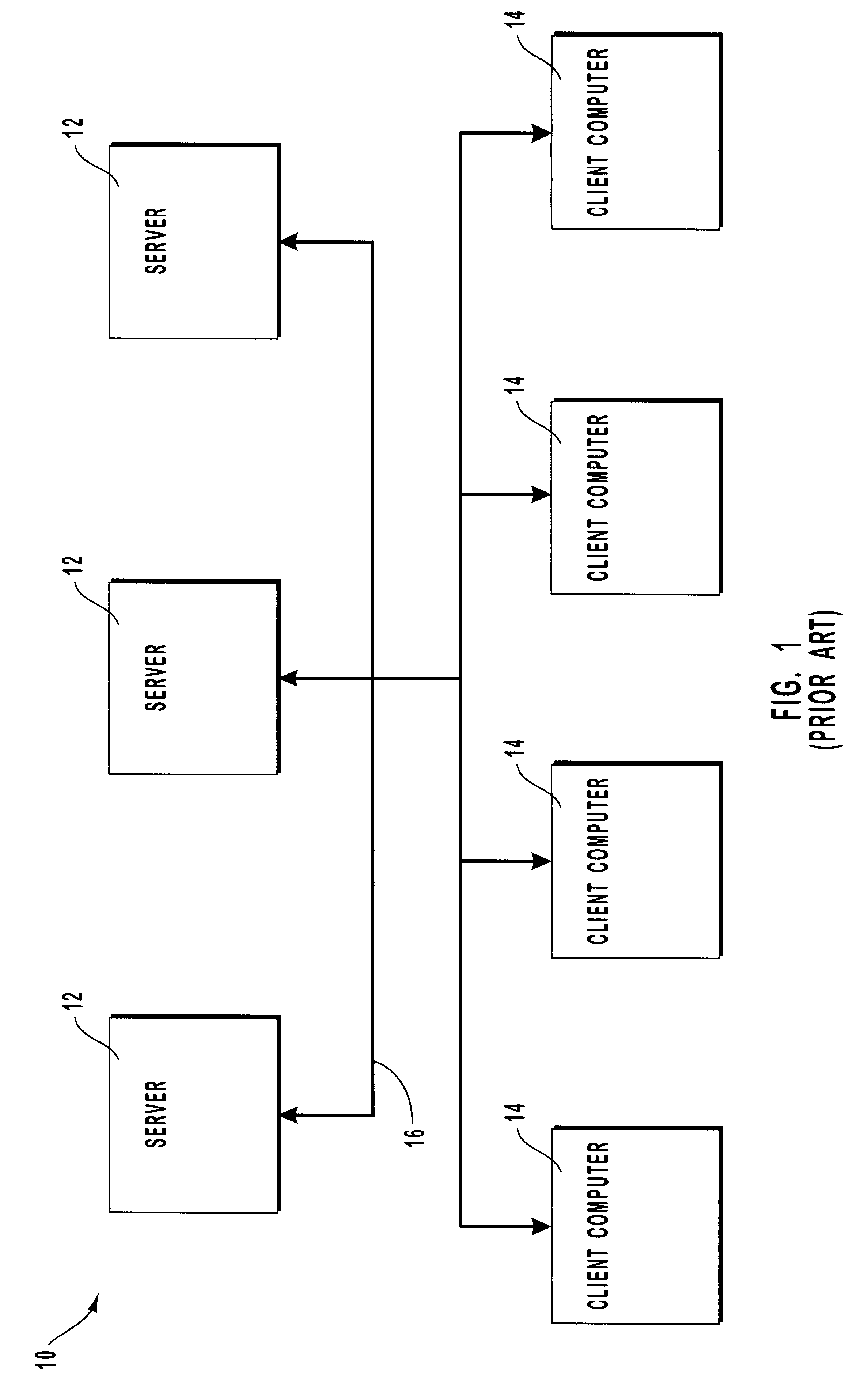Establishing one computer as a replacement for another computer
a technology for replacing computers and computers, applied in the field of establishing one computer as a replacement for another computer, can solve the problems of reducing affecting the use of clients' computers, and affecting the overall cost of ownership, so as to reduce the administrative effort and attention
- Summary
- Abstract
- Description
- Claims
- Application Information
AI Technical Summary
Benefits of technology
Problems solved by technology
Method used
Image
Examples
example 2
FIG. 7 depicts in greater detail the second replacement scenario of FIG. 2A, wherein client computer 24b is replaced in its entirety by replacement client computer 24b'. Moreover, the replacement critical hardware in replacement client computer 24b' is of the same type as the previous critical hardware in client computer 24b. In this example, the replacement hardware components illustrated in FIG. 7 include a network interface card 174, a motherboard 180, a hard disk 188, and a hard disk controller 196. Of the foregoing hardware components, all are considered to be "critical" in this example, except hard disk controller 196.
Turning to the method illustrated in the flow diagrams of FIGS. 10A-10C and 11-13, replacement client computer 24b' sends a server request in step 120 as described above in reference to Example 1. In this example, however, GUID 186 is not located by the server in GUID / server assignment repository 66. Accordingly, in decision block 122 of FIG. 10A, GUID 186 is not...
example 3
FIG. 8 illustrates the replacement of a previous client computer with a replacement client computer, including critical hardware components of a different type than the previous critical hardware components. In particular, in this example, it is assumed that network interface card 274, motherboard 280, and hard disk 288 are of different types than the corresponding hardware components of previous client computer 24c.
Step 120 and decision block 122 are conducted as described above in reference to Example 2. In particular, GUID 286 is recognized as being new, and the method continues in the sub-routine illustrated in FIG. 11. Furthermore, the steps of FIG. 11 are conducted in substantially the same way that is described in reference to Example 2. Client computer 24d is recognized as a replacement for previous client computer 24c, and GUID / server assignment repository 66 is updated accordingly. Next, steps 124, 126, 128, 130, and 132 are conducted as described above in reference to Exa...
example 4
FIG. 9 illustrates the replacement of only selected hardware components of a client computer. In this example, the previous hard disk controller is replaced with a new hard disk controller of a different type. In this example, the hard disk controller 396 is not a critical hardware component in the sense that the operating system must be reconfigured before booting. However, the new hard disk controller presents special considerations that are analyzed below. It is further assumed that client computer 24e, with its previous hardware configuration, has been connected at least once to its assigned server.
In step 120, client computer 24e makes a server request as described herein in reference to Example 1. GUID 86 is recognized in decision block 122, after which steps 124, 126, 128, 130, and 132 are conducted as described herein in reference to the other examples. Although replacement hard disk controller 396 is of a different type than the previous controller 96, hard disk serial numb...
PUM
 Login to View More
Login to View More Abstract
Description
Claims
Application Information
 Login to View More
Login to View More - R&D
- Intellectual Property
- Life Sciences
- Materials
- Tech Scout
- Unparalleled Data Quality
- Higher Quality Content
- 60% Fewer Hallucinations
Browse by: Latest US Patents, China's latest patents, Technical Efficacy Thesaurus, Application Domain, Technology Topic, Popular Technical Reports.
© 2025 PatSnap. All rights reserved.Legal|Privacy policy|Modern Slavery Act Transparency Statement|Sitemap|About US| Contact US: help@patsnap.com



